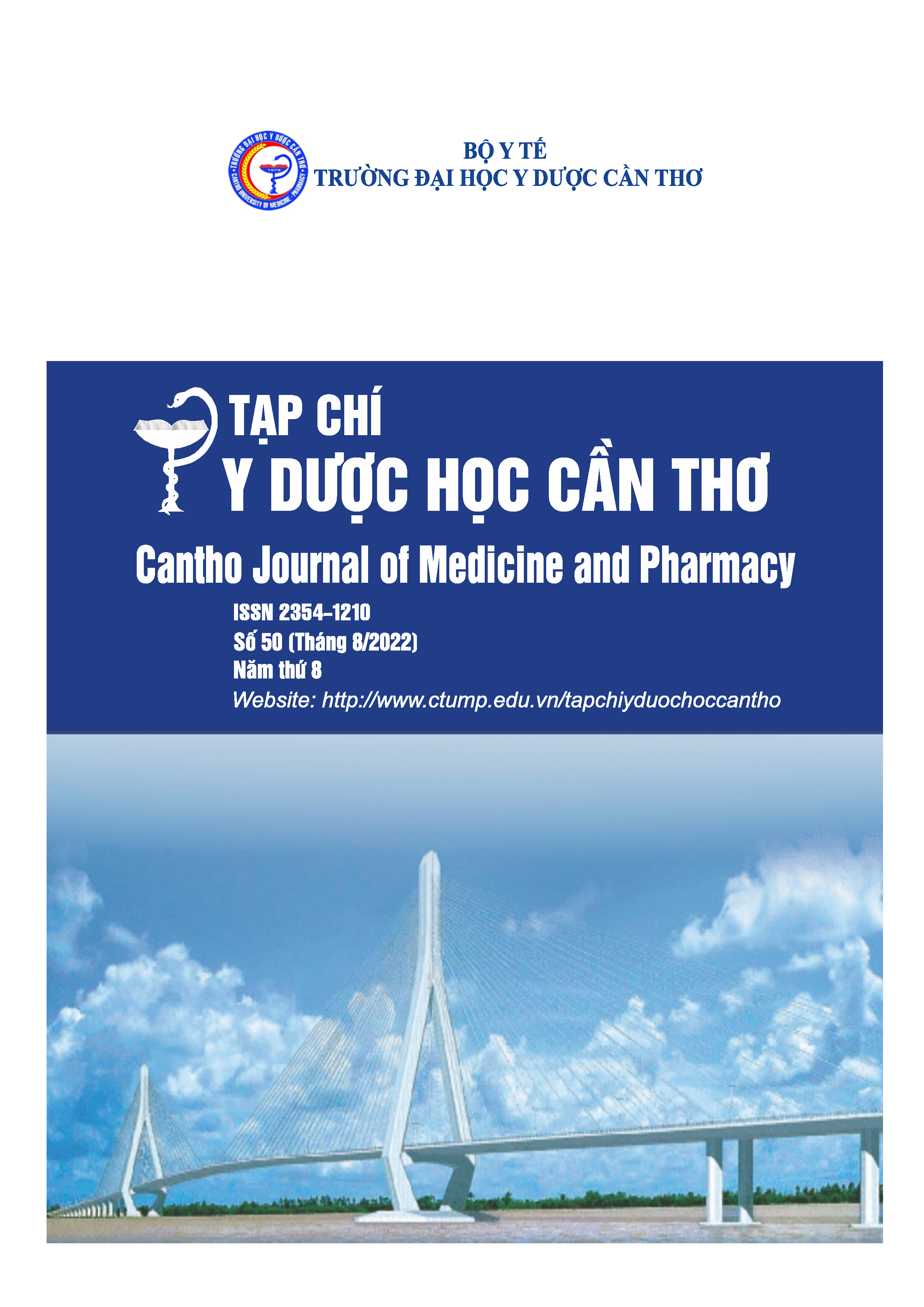DETERMINE INFECTION RATE AND ANTIBIOTIC RESISTANCE OF CARBAPENEMASE - PRODUCING KLEBSIELLA PNEUMONIAE ISOLATED FROM PATIENT SPECIMENS AT CAN THO GENERAL HOSPITAL AND CAN THO CENTRAL GENERAL HOSPITAL IN 2021-2022
Main Article Content
Abstract
Background: Klebsiella pneumoniae is one of the important pathogenic bacteria in humans, carbapenemase-producing Klebsiella pneumoniae (CPKP) in particular, bacteria are resistant tomultiple antibiotics and is causing serious life-threatening infections. Objectives: 1. To determinate the rate of CPKP in the population of Klebsiella pneumoniae isolated from patient samples and some related factors; 2. To determinate the rate the antibiotic resistance of CPKP isolated from patient samples. Materials and methods: 345 strains of K. pneumoniae were isolated, identified, made antibiotic by MIC method on the automated identification and susceptibility testing system, analyzed related factors. The resistant antibiotic test results made according to MIC of the CLSI 2020. Identify CPKP follow the modified carbapenem inactivation method. Results: There were 110 strains of K. pneumoniae producing carbapenemase isolated in 345 strains K. pneumoniae accounted for 31.9%. The rate of CPKP associated with some specimens, departments (p<0.05). All strains of CPKP in the research were resistant to penicillin and cefazolin. The rate of antibiotic resistance to the antibiotics piperacillin-tazobactam, cefepime, amikacin, ciprofloxacin, imipenem of CPKP was highter than non-CPKP, this difference was statistically significant (p<0.05). Conclusion: The rate of CPKP accounted for 31.9%. CPKP multi-antibiotic resistance
Article Details
Keywords
Carbapenemase-producing Klebsiella pneumoniae, non-carbapenemase producing Klebsiella pneumoniae, Antibiotic Resistance, Klebsiella pneumoniae
References
2. Trần Diệu Linh (2017), “Nghiên cứu ở mức độ phân tử khả năng kháng carbapenem của một sốvi khuẩn Gram âm phân lập từ bệnh nhân tại Bệnh viện Việt Đức và Bệnh viện Quân Đội 108”,Luận án Tiến sĩ Sinh học, Trường Đại học Khoa học Tự nhiên, Hà Nội.
3. Lương Hồng Loan, Huỳnh Minh Tuấn (2020), “Trực khuẩn Gram âm tiết ESBL, AmpC, Carbapenemase và phổ đề kháng kháng sinh tại Bệnh viện Đại học Y Dược Thành phố Hồ Chí Minh”, Tạp chí Y học Thành phố Hồ Chí Minh, 24 (2), tr.223-229.
4. Nguyễn Quốc Trung, Phạm Thái Bình, Võ Phương Linh, Cao Minh Nga (2019), “Khảo sát in vitro sự phối hợp beta-lactam với một số kháng sinh trên Escherichia coli và Klebsiella pneumoniae đa kháng”, Tạp chí Y học Thành phố Hồ Chí Minh, 23(2), tr.100-106.
5. Phạm Thị Vân, Hà Thị Thu Vân, Nguyễn Thái Sơn (2017), “Nghiên cứu đặc điểm phân bố của các chủng Enterobacterriaceae sinh β - Lactamase phổ rộng, carbapenemase phân lập tại Bệnh viện Quân Y 103 giai đoạn 2014-2016”, Tạp chí Y Học Việt Nam, 1(458), tr.4-7.
6. Chiu S. K., Ma L., Chan M. C., Lin Y. T., et al. (2018), “Carbapenem Nonsusceptible Klebsiella pneumoniae in Taiwan: Dissemination and Increasing Resistance of Carbapenemase Producers During 2012-2015”, Sci Rep, 8(1), pp.8468.
7. Clinical and Laboratory Standards Institute (2020), Preformance standards for antimicrobial susceptibility testing; Thirty infomational supplement, M100-S30., 40(1), pp.118-130.
8. Gurung S., Kafle S., Dhungel B., Adhikari N. (2020), “Detection of OXA-48 Gene in Carbapenem-Resistant Escherichia coli and Klebsiella pneumoniae from Urine Samples”, 13, pp.2311-2321.
9. Jeong S. H., Kim H. S., Kim J. S., Shin D. H., et al. (2016), “Prevalence and Molecular Characteristics of Carbapenemase-Producing Enterobacteriaceae From Five Hospitals in Korea”, Ann Lab Med, 36(6), pp.529-535.
10.Navon-Venezia S, Kondratyeva K, Carattoli A (2017), “Klebsiella pneumoniae: a major worldwide source and shuttle for antibiotic resistance”, FEMS Microbiology Reviews, 41(3), pp.252-275.
11.Padmini N, Ajilda A A K, Sivakumar N, Selvakumar G (2017), “Extended spectrum β-lactamase producing Escherichia coli and Klebsiella pneumoniae: critical tools for antibiotic resistance pattern”, 57(6), pp.460-470.
12.World Health Organization (WHO) (2017), Global priority list of antibiotic-resistant bacteria to guide research, discovery, and development of new antibiotics, pp.5-7.


